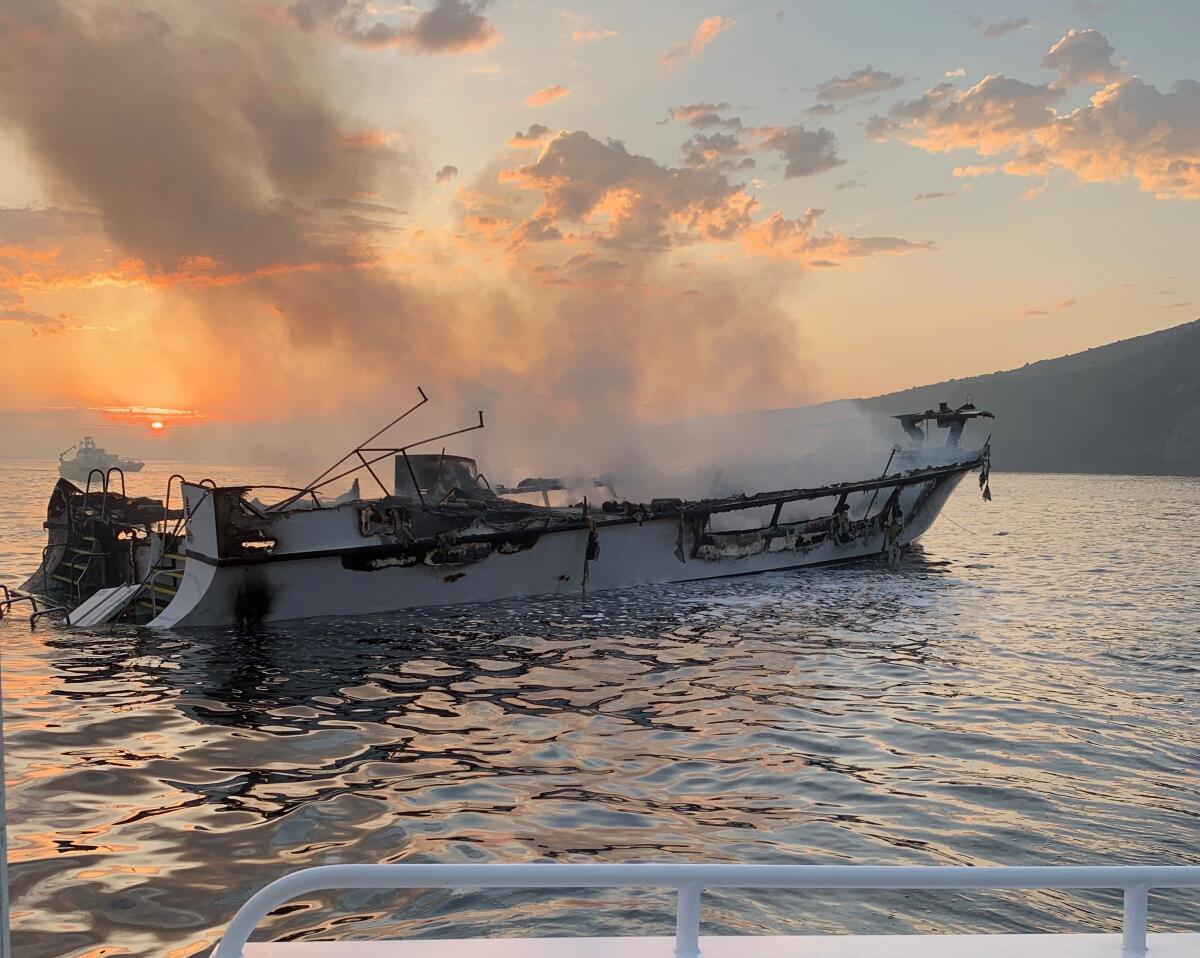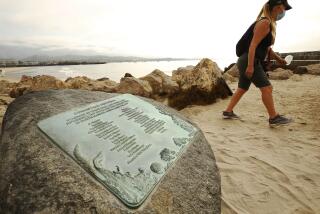Conception dive boat disaster: Feds to reveal cause of blaze that killed 34

As the anniversary of California’s deadliest maritime disaster in modern history nears, the National Transportation Safety Board announced it will hold a hearing in October to reveal the results of its investigation into the Conception dive boat fire that killed 34 people off Santa Cruz Island.
A preliminary NTSB investigation concluded that five members of the crew were asleep in the wheelhouse and that there was no roving watch on the vessel operated by Santa Barbara-based Truth Aquatics as required by the U.S. Coast Guard during the hours when passengers were asleep below deck.
But the more extensive examination of the origins, cause and events leading up to the Conception being burned to the waterline has taken months of investigation led by NTSB board member Jennifer Homendy. The board will vote on findings, probable cause and recommendations for changes to small passenger vessels to avoid a repeat of what its chairman called a “horrible, horrible tragedy.”
“We have substantially completed our investigation,” said Eric Weiss, an NTSB spokesman. Weiss said that in the coming weeks NTSB staff will make public interviews, research and other investigative materials before the public hearing.
Families of the victims were notified Monday morning of the hearing. A Times investigation last year found that the U.S. Coast Guard had rejected prior NTSB recommendations for tougher fire safety rules for small boats. The U.S. Coast Guard has the sole authority over such vessels.
The Bureau of Alcohol, Tobacco, Firearms and Explosives’ National Response Team brought in to examine the charred wreckage is “in the process of completing the origin and cause report,” said Ginger Colbrun, a bureau spokeswoman. The fire is also the subject of a criminal investigation by Coast Guard investigators in consultation with the U.S. attorney in Los Angeles, the FBI and ATF.
In addition to the NTSB probe is an inquiry by the Coast Guard Marine Board of Investigation. Much of the investigations of that day have focused on Capt. Jerry Boylan’s actions that night. Boylan has not commented publicly on the deadly blaze.
The boat’s owner, Glen Fritzler, has said Boylan did everything possible to save lives, and one of his attorneys said that a crew member had checked the galley about a half-hour before the fire broke out.
About 3:30 a.m. Sept. 2, 2019, some crew members were awakened by a loud noise and found the galley and salon areas of the boat engulfed in flames, with the main bunk room located directly below the fire, in the belly of the boat. The only way for those below to escape was through two exits into the galley and salon areas. The surviving crew members attempted to make their way toward the engulfed middle deck, but were beaten back by flames.
Five crew members were able to escape, while 33 passengers and one crew member sleeping below deck died in the fire. The coroner determined that the victims died of smoke inhalation.
In the wake of the fire, NTSB and Coast Guard investigators raised questions about the small escape hatch above the bunks of the Vision, a similar vessel owned by Truth Aquatics, and also looked at the charging areas where divers plugged in numerous lithium-ion batteries used in cameras, phones and computers.
Some boat safety experts have pointed to the batteries — which have become a staple for divers who use them to power underwater equipment such as lights and scooters — as a possible starting point for the blaze.
After the Conception fire, the Coast Guard recommended that owners of passenger vessels immediately urge crews “to reduce potential fire hazards and consider limiting the unsupervised charging of lithium-ion batteries and extensive use of power strips and extension cords.”
Fritzler previously told The Times he believed the batteries were the cause of the Conception disaster and that he never received any alerts on the issue from authorities.
In the weeks after the fire, Coast Guard inspectors across the country scurried to inspect small vessels that accommodate overnight passengers. Captains told The Times that inspectors asked them to make voluntary safety improvements for fire protection, escape hatches and emergency signs and to update policies for having a roving watch at all times.
In Congress, Sen Dianne Feinstein (D-Calif.) and representatives for the Santa Barbara area have championed a bill to reform boat regulations.
More to Read
Sign up for Essential California
The most important California stories and recommendations in your inbox every morning.
You may occasionally receive promotional content from the Los Angeles Times.











